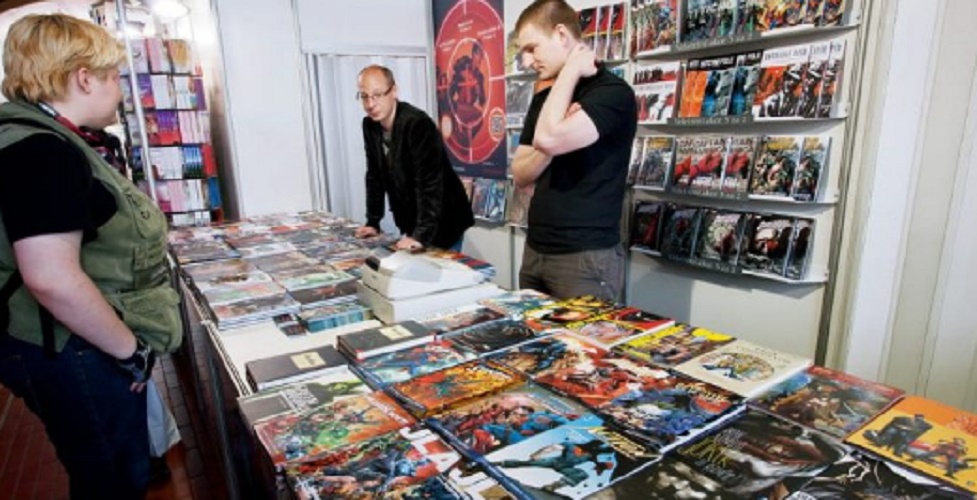What is the comic?
We explain what is the comic and the history of this form of artistic expression. In addition, the different types of comics and their peculiarities.
-
What is the comic?
The term comic is an accepted loan of the English language ( comic , that is, “funny”), which today is understood as a synonym for cartoon or even graphic novel.
In any case, it is a form of artistic expression , while a means of communication , consisting of a series of illustrations that, read in continuous sequence, allows the reader to recompose a story of some kind.
They can be framed in vignettes, that is, in boxes whose shape and style corresponds to the narrative or thematic content that is inside, and may or may not have the support of written text or signs and characters of the genre.
Similarly, it can be drawn on paper of different types, or even in digital format ( Webcomics ). It is often the result of collaborations between artists of different kinds: artists, scriptwriters, colorists and designers.
The same goes for your audience, which can be extremely varied: there is a theme and a comic style for practically all reading tastes, even the most artistically demanding. For that reason, the comic strip is considered today as the ninth art (of the Fine Arts recognized by the Academy).
The term comic, finally, comes from comic books that were one of the first mass production formats of this type of work.
From there also comes a certain aura of discrediting and rejection of reading, associated with leisure, mere entertainment and even pornography and vice. Luckily, such prejudices are already widely minority.
-
Comic book history

The precursors of the comic go back to the ancient pictorial forms of humanity, which mixed text and image in a reading sequence, as was the case with Egyptian hieroglyphs or Mayan codices.
However, its first real forms appear as a means of protest and political satire, in times as old as those of the Roman Empire. These vignettes of political humor showed the powerful or the rulers in ridiculous, rude or laughable situations, and therefore used to be anonymous and illegal.
The invention of printing and lithography, very later, began its mass dissemination, often as a pedagogical format for the religious education of children and women, and subsequently as a kind means of providing instructions to the reader regarding the assembly of an artifact. or to the conduct you must have in an enclosure (for example, the drawings that still appear in the brochures of commercial aircraft).
In the nineteenth century the explosion of the written press also massified the comic , making it recover its parodic function in the so-called comic strips : sets of more or less elaborate vignettes that told funny, satirical, mocking stories, often linked to the themes of actuality, or recovering stories of popular or literary tradition.
From there, after World War I , the publication in magazine format (the c or mic books ), aimed at a child and adolescent audience eager for entertainment and imaginative escapes, in the difficult times of the Great Depression (around from 1929).
The magazine format would be the most famous of the genre, giving rise to the superhero magazines that still last and that were the main youth entertainment for decades. Many of his characters would go to the movies , animation and then video games.
At the end of the 20th century, the format reached its maturity in the graphic novel : an adult, demanding, complex composition that brings together the artistic attributes of drawing and illustration, with the narrative composition and linguistic reflection characteristic of literature .
-
Comic types

There is no formal classification of comics , since even their nomenclature seems to be the subject of controversy. Some reject the term to find him closely linked to the ephemeral and banal origin Cartoon teen, proposing more sophisticated terms like Art s ecuencial (Will Eisner). However, according to its publication format, there is usually talk of:
- Comic strips . Whether they are inserted in the newspaper (they still do it) or in magazines, or even in compilation books of a specific artist, the comic strips respect the format that their name indicates: they are a strip of three or more bullets in which A short story is depicted, often similar to the joke , the gag or, also, the delivery narrative, typical of the 19th century.
- Comics or comic books . Printed on paper of greater or lesser quality, but usually in full color, with a professional finish and in mass runs, these are the classic bullet-reading magazines, although they are far from being only superheroes or amazing adventures.
- Graphic novels . This is a wide and diverse category, where the most formal, educated and demanding artistic proposals fit together, often for an informed public, willing to interpret them as is done with a work of written or illustrated art. However, there are graphic novels without any text, others with a predominance of text, in short, there is no single model for them.





